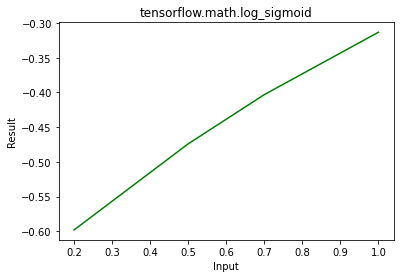TensorFlow es una biblioteca de Python de código abierto diseñada por Google para desarrollar modelos de aprendizaje automático y redes neuronales de aprendizaje profundo. log_sigmoid() se usa para encontrar el elemento log sigmoid de x. Específicamente, y = log(1 / (1 + exp(-x))).
Sintaxis: tf.math.log_sigmoid(x, nombre)
Parámetro:
- x: Es el tensor de entrada. Los dtype permitidos para este tensor son float32, float64.
- name(opcional): Define el nombre de la operación.
Devoluciones:
Devuelve un tensor del mismo tipo que x.
Ejemplo 1:
Python3
# Importing the library
import tensorflow as tf
# Initializing the input tensor
a = tf.constant([.2, .5, .7, 1], dtype = tf.float64)
# Printing the input tensor
print('Input: ', a)
# Calculating result
res = tf.math.log_sigmoid(x = a)
# Printing the result
print('Result: ', res)
Producción:
Input: tf.Tensor([0.2 0.5 0.7 1. ], shape=(4, ), dtype=float64) Result: tf.Tensor([-0.59813887 -0.47407698 -0.40318605 -0.31326169], shape=(4, ), dtype=float64)
Ejemplo 2: Visualización
Python3
# importing the library
import tensorflow as tf
import matplotlib.pyplot as plt
# Initializing the input tensor
a = tf.constant([.2, .5, .7, 1], dtype = tf.float64)
# Calculating result
res = tf.math.log_sigmoid(x = a)
# Plotting the graph
plt.plot(a, res, color = 'green')
plt.title('tensorflow.math.log_sigmoid')
plt.xlabel('Input')
plt.ylabel('Result')
plt.show()
Producción:

Publicación traducida automáticamente
Artículo escrito por aman neekhara y traducido por Barcelona Geeks. The original can be accessed here. Licence: CCBY-SA